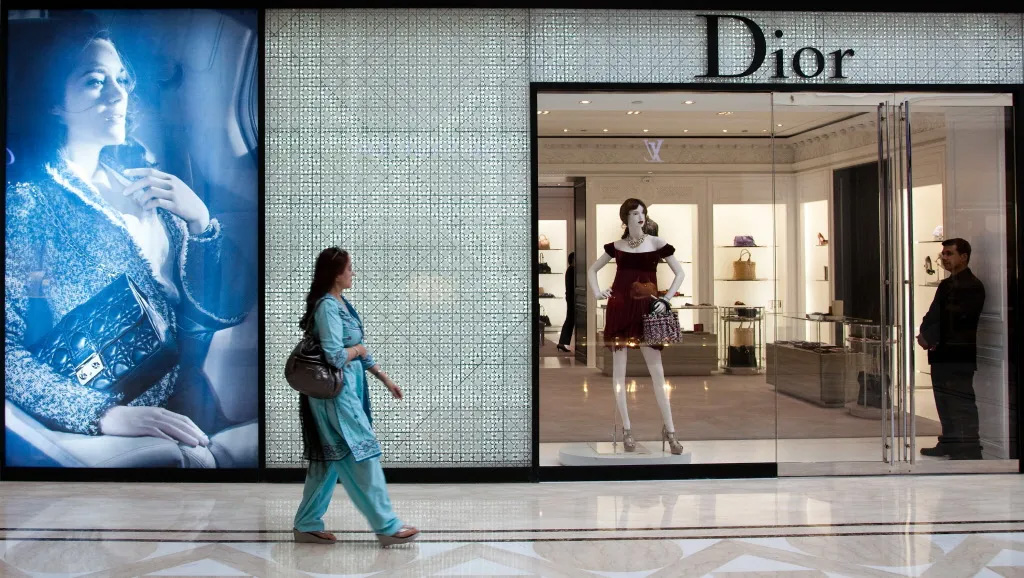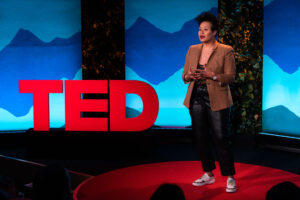
Not all consumers are considered impulsive buyers, but rather aspirational buyers. There is a specific segment of consumers who love checking off items from their dream luxury shopping list, but they are among the many consumers who are now eyeing high-end products. And brands seem to have understood this well.
Fueled by rising disposable incomes and an aspirational outlook, there is growing interest among Indian consumers for luxury brands. In fact, the number of ultra-high-net-worth-individuals (UHNIs) is going to cross 19,000 by 2027, compared to 12,000 in 2022, according to a report by Bain.
“As the wealth of India’s population grows, it naturally extends to the luxury market,” commented Anandita B., the Founder of Moodboard Analytics, in a recent social media update.
However, there are other factors that have led to this trend. Increasing globalization of consumer tastes and the rise of digital connectivity being two of them, says Megha Sabhlok, co-founder and COO at Just Herbs.

Influx of global luxury brands in India
The influx of global luxury brands in India has been a significant trend in recent years, reflecting the country’s growing consumer market for high-end products. Here are some details, examples, and statistics related to this trend:
- Expansion of International Luxury Stores: Many global luxury brands have expanded their presence in India by opening flagship stores or increasing the number of outlets. For instance, brands like Louis Vuitton, Gucci, Chanel, Prada, and Burberry have established a strong retail presence in major Indian cities such as Mumbai, Delhi, Bangalore, and Chennai.
- Launch of Luxury Malls and Shopping Destinations: Luxury retail developments like Jio World Plaza in Mumbai and DLF Emporio in Delhi have attracted numerous international luxury brands. These upscale malls offer a premium shopping experience and house a wide range of luxury fashion, accessories, and lifestyle products.
- Partnerships and Collaborations: Luxury brands often collaborate with Indian designers or celebrities to create exclusive collections or limited-edition products tailored to the Indian market. For example, collaborations between Indian designers like Sabyasachi Mukherjee and international brands like Christian Louboutin or H&M have gained popularity among affluent Indian consumers.
- Market Growth and Consumer Preferences: The demand for luxury goods in India has been fueled by the rising affluence of the middle and upper classes, coupled with changing consumer preferences. Indian consumers are increasingly seeking luxury products that reflect their lifestyle, status, and personal taste.
- Economic Impact: The presence of global luxury brands in India has contributed to the country’s economy by generating employment opportunities, boosting tourism, and driving retail growth. Luxury retail segments such as fashion, accessories, beauty, and hospitality have witnessed substantial investments and market expansion.
Indian brands shine on global platform
Indian brands have indeed been making significant strides on the global stage, particularly in the luxury and lifestyle sectors.
- Luxury Fashion: Indian designers and brands have gained recognition globally for their unique designs and craftsmanship. For instance, designer Sabyasachi Mukherjee’s collaboration with international brands like Louboutin and Pottery Barn has garnered attention. His limited-edition collections and runway shows in fashion capitals like Paris and New York have elevated the profile of Indian fashion on the global stage.
- Jewelry: Indian jewelry brands, known for their intricate designs and use of precious gemstones, have also made an impact internationally. Brands like Tanishq, Amrapali, and Nirav Modi (before the controversy) have established a presence in international markets, showcasing India’s rich heritage in jewelry craftsmanship.
- Beauty and Wellness: Indian beauty and wellness brands have seen increasing demand globally, driven by a growing interest in natural and Ayurvedic products. Brands like Forest Essentials, Kama Ayurveda, and Just Herbs have expanded their reach beyond India, tapping into the global trend towards organic and holistic skincare.
- Furniture and Home Decor: Indian home decor brands have gained popularity for their blend of traditional motifs with modern designs. Companies like Fabindia, Jaipur Rugs, and Pepperfry have ventured into international markets, offering a diverse range of furniture, textiles, and decor items.
- Statistics: According to a report by the Confederation of Indian Industry (CII) and Deloitte, Indian luxury brands are projected to grow at a compound annual growth rate (CAGR) of 25% and reach a market size of $30-35 billion by 2025. This growth is fueled by increasing brand awareness, expanding consumer base, and strategic marketing efforts by Indian companies.
Experiential shopping holds value in luxury retail
Experiential shopping in luxury retail refers to creating immersive and memorable experiences for customers that go beyond just buying products. This approach has gained significant importance in the luxury sector as brands strive to differentiate themselves and provide added value to consumers.
- Luxury brands are focusing on experiential shopping to create emotional connections with customers, enhance brand loyalty, and drive repeat business.
- Experiential shopping allows luxury retailers to showcase their heritage, craftsmanship, and storytelling, creating a unique and memorable shopping environment.
- Interactive Store Environments: Luxury retailers are investing in interactive store designs that engage customers through digital displays, virtual reality experiences, and personalized recommendations.
- Exclusive Events: Hosting exclusive events such as fashion shows, product launches, and VIP experiences for loyal customers.
Personalized Services: Offering personalized services such as bespoke tailoring, one-on-one consultations with stylists, and VIP treatment to create a personalized shopping journey. - Brand Collaborations: Collaborating with artists, designers, and influencers to create limited-edition collections or immersive brand experiences.
- According to a report by McKinsey, luxury consumers increasingly value experiences over material possessions, with 78% of luxury spending attributed to experiences.
- A study by Deloitte found that 62% of luxury consumers prefer brands that offer unique experiences, indicating a shift towards experiential shopping.
- Luxury brands are leveraging technology such as augmented reality (AR) and artificial intelligence (AI) to enhance the experiential aspect of shopping, with 47% of luxury retailers investing in AR technologies.
Success Stories: - Burberry is known for its innovative approach to experiential shopping, with initiatives like Burberry Bespoke allowing customers to customize their trench coats and Burberry Scarf Bars offering personalized monogramming services.
- Louis Vuitton’s “Objets Nomades” collection showcases the brand’s craftsmanship through a series of travel-inspired furniture and accessories, displayed in immersive installations at select stores and events.






